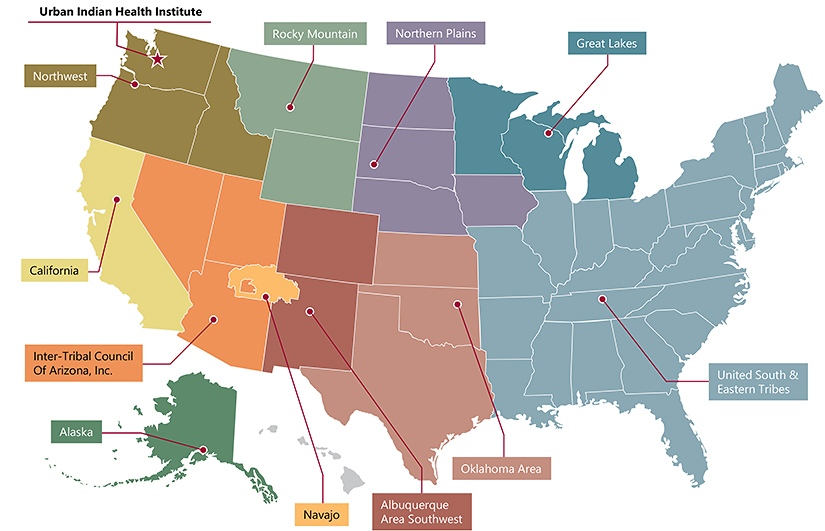Key Organizations
National
National Congress of American Indians (NCAI): Like the U.S. Congress, the NCAI is a national organization representing tribal interests at the federal level.
Regional
Affiliated Tribes of Northwest Indians (ATNI): At the regional level, ATNI represents 57 tribes across Oregon, Washington, Idaho, southeast Alaska, northern California and western Montana. They facilitate communication, policy development, and advocacy between tribes and with other governments.
Northwest Portland Area Indian Health Board (NPAIHB): NPAIHB is a health-specific regional non-profit organization that serves and is directed by tribes in Washington, Oregon, and Idaho. It also houses one of the 12 national Tribal Epidemiology Centers providing research and data services for the tribes of the Northwest.
Tribal Epidemiology Centers are a division of the Indian Health Service. Twelve centers across the nation provide health research and surveillance for tribes. There are three Centers in the Northwest region: the Alaska Native Epidemiology Center; the Northwest Tribal Epidemiology Center, which is housed within the Northwest Portland Area Indian Health Board; and the Urban Indian Health Institute.

Map of Tribal Epidemiology Centers in the United States. Click to enlarge.
For public health, it is helpful to review any resolutions passed by these key organizations, in addition to those passed by individual tribes. These resolutions can provide helpful context about current health issues of interest and priorities of tribes in their community.
The Alaska Native Tribal Health Consortium (ANTHC) is a tribal health organization itself, but is a consortium of the tribal health organizations in Alaska. ANTHC and Southcentral Foundation co-own and manage the Alaska Native Medical Center. ANTHC also house the Alaska Native Epidemiology Center.
This table helps illustrate the functions and relationships of the different state, regional, and federal organizations with which tribes in the Northwest interact. While many tribal organizations have multiple roles and functions, those focusing on policy provide tribal representation and set priorities, while those focusing on programs are more likely to directly implement health-related initiatives.
| Federal | Regional | State | |
|---|---|---|---|
| Policy | National Congress of American Indians | Affiliated Tribes of Northwest Indians | American Indian Health Commission |
| Program | Indian Health Services | Northwest Portland Area Indian Health Board | Department of Health |